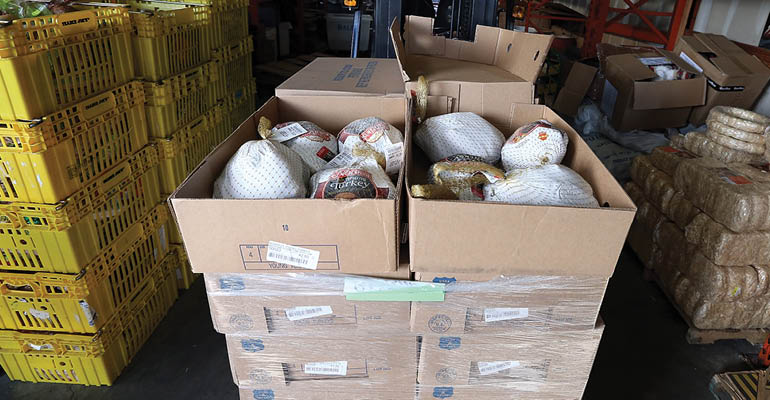The biggest issues surrounding food waste diversion will be addressed at WasteExpo.

As food waste diversion and prevention become ever-pressing issues, some states are adopting legislation that is driving the efforts of local governments and industries in the space. Further, these states are looking hard at building infrastructure to achieve their goals.
California is calling for a 75 percent reduction in organic waste disposal by 2025 and at least 20 percent more recovery of disposed edible food by that year.
In response, CR&R, a waste management and renewable energy firm in Orange County, Calif., built an anaerobic digestion plant in Paris, Calif. that can process 335,000 tons of organic waste a year.
“It was designed to meet laws now implemented or being worked out and organic waste laws we foresee for the future,” says Paul Relis, CR&R senior vice president.
But there’s a lot more to do to work within tightening regulatory environments.
“How does a company like ours figure out how to recycle organics in a publicly acceptable, reasonably cost-effective way that’s supported by local governments who are paying for these services?” asks Relis.
This is among the questions Relis will address at a WasteExpo session called “Solutions to Food Loss, Waste and Recovery: Organics Diversion Legislation and Infrastructure Development,” on April 23 at 9 a.m. in Las Vegas.
Among considerations are that businesses and residents require different service models and that collection programs be as easy as possible to participate in, while targeting contamination.
CR&R developed a system for its digester where, while commercial customers must use separate containers, residents can place green and food waste in the same bin.
Still, says Relis, the focus needs to expand beyond efficient technology and convenient, tailored collection models. It even needs to reach beyond enforcement.
“Just passing a law does not assure a program will work well. The public and businesses have to be educated,” says Relis. “That’s going to be an ongoing issue—getting residents and businesses to understand what they need to do and to do it.”
Nonprofits Natural Resources Defense Council (NRDC) and Ad Council have created a national consumer campaign to raise awareness and inform on how to waste less food. Cities are using tools from this campaign in their outreach, such as downloadable videos and posters.
“Often when we talk about infrastructure around food waste, folks interpret that as a need to do more composting and other organics recycling. That is true, but we need to prevent wasting food in the first place,” says Darby Hoover, senior resource specialist of the food and agriculture program at NRDC, who will speak at WasteExpo.
The campaign goal is to motivate with positive messaging and to show consumers that they can make a big difference collectively.
“People don’t set out to waste food, but to provide healthy and abundant choices and to try new things. Sometimes in doing this, food is wasted. We need to redirect their positive motivations into strategies for wasting less food,” says Hoover.
Developing consistent messaging, nationwide, is key.
“People tend to think what they do in their individual households won’t make a big difference. But sharing the same messages and strategies throughout the country helps cultivate a sense that we can accomplish together. They will realize they are part of something bigger,” says Hoover.
Walmart is addressing food waste along the entire hierarchy—prevention, donation and recycling. Like other large retail chains, the corporation is working to have impact beyond its own operations.
The company began recycling inedible food waste within its U.S. operations in 2009, shortly after determining that this material accounted for more than one-third of its landfilled compactor waste.
“We saw little food waste management infrastructure in the U.S. at the time. We began to build and invest in a network, not just to recycle our own inedible food but to expand that opportunity to others,” says Kate Worley, Walmart’s senior manager of solid waste and recycling, who will also present at WasteExpo. “We recognized that, because of our density and scale, by expanding our recycling program we could help build infrastructure that businesses, organizations and communities could take advantage of.”
Walmart developed a system within its own operations to collect inedible food and work with haulers and processors to see that it reaches end users like to farmers for animal feed.
The corporation works to grow food donation networks, and it partnered with Feeding America on this effort. Last year, it sold more than 250 million units of food at a discount to prevent waste.
“It’s crucial that large chains support efforts to prevent, donate and recycle food. They are uniquely positioned to impact change at scale along the hierarchy,” says Worley.
About the Author(s)
You May Also Like




